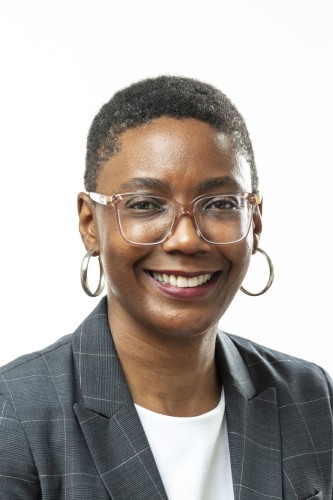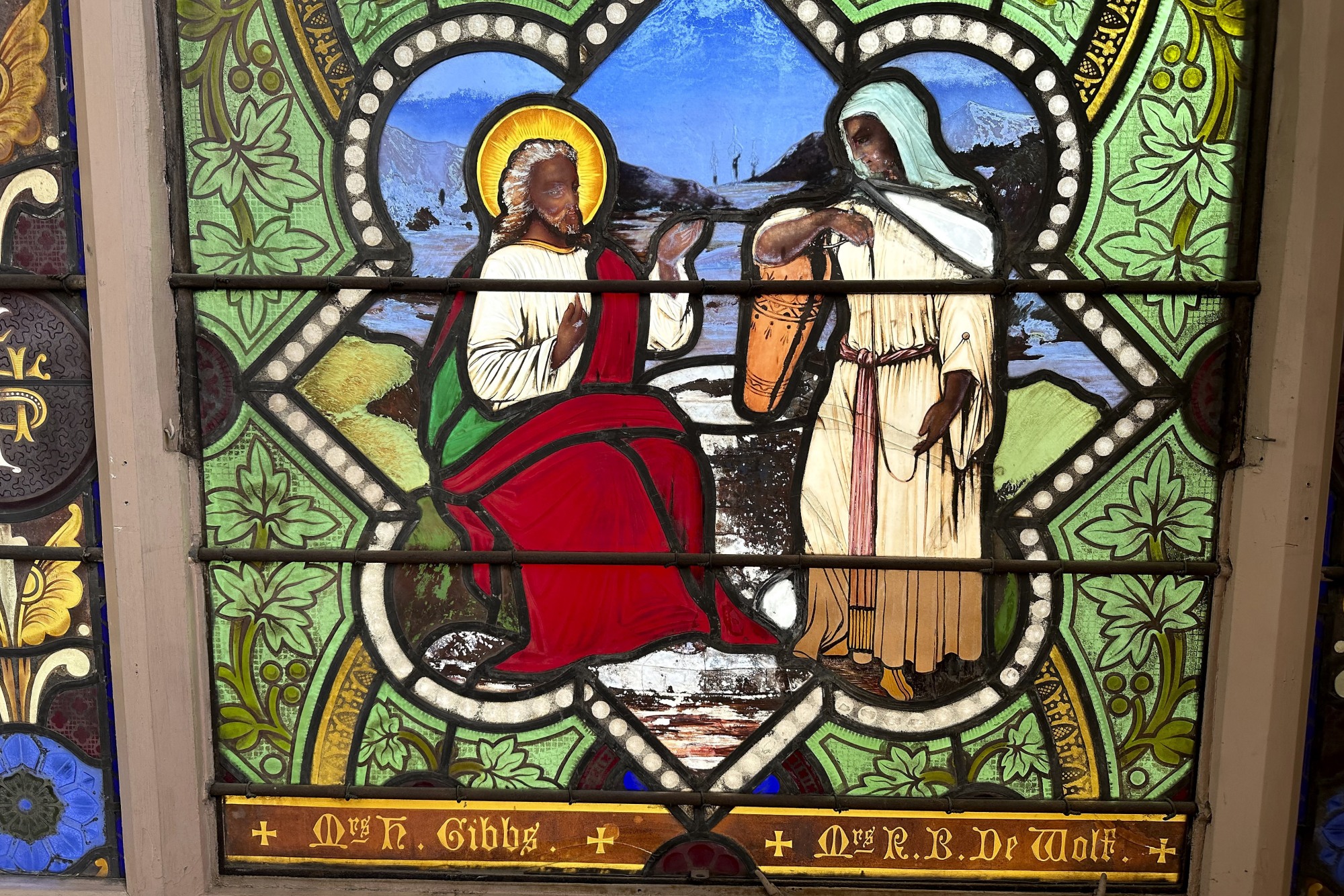PROVIDENCE, R.I. [Brown University] — It’s one of the most intriguing art-history mysteries anywhere. And in the fall semester, a team of Brown University students traveled to historical sites and archives throughout Rhode Island to contribute meaningful primary source research to the curious case of the “Black Gospel Window.”
In a course taught by Associate Professor of the History of Art and Architecture Itohan Osayimwese, students researched a 12-foot-tall stained-glass window that depicts Jesus and three female biblical figures — Martha, Mary and a Samaritan woman — with dark skin tones.
The 1877 window was uncovered during a 2022 renovation of a former church in Warren, Rhode Island. It is believed to be the earliest known depiction of a Black Jesus Christ and Black gospel women in a public space, according to Osayimwese.

“We almost immediately suspected that it was an object of national, and perhaps international, significance,” said Osayimwese, who was contacted for research expertise after the window was uncovered by Hadley Arnold, owner of the former St. Mark’s Church, when she was renovating it into a residence. “It was exciting that it was in our own backyard.”
Shortly after its discovery, the intriguing window made local and national news. Initial research conducted by Arnold and others revealed that it was commissioned by Mary P. Carr to honor her aunts, Hannah Bourne Gibbs and Ruth Bourne DeWolf, two wealthy white women whose families had ties to the slave trade. Early leads suggested the window might have been made by New York-based Henry Sharp Studio, which in the 19th century produced stained-glass windows for churches.
Only two years later, Osayimwese said there is still a lot about the work of art that is unknown, which made it an excellent focus for a new course at Brown: “Rather than just continue to nurture my own relationship to the project as an individual scholar, I thought, ‘Let’s bring some students in,’” Osayimwese recalled.
The course, called Art History Detectives: The Case of the Black Gospel Window, has welcomed guest lecturers, and the students have traveled to research sites including the Bristol Historical and Preservation Society, the former St. Mark’s Church, the George Hail Free Library in Warren, the Warren and Bristol town halls, the Providence Preservation Society and the Rhode Island Historical Society, among others, in search of primary source documents relevant to the window.
Osayimwese, who is the chair of Brown's Department of the History of Art and Architecture, said the course is also a key opportunity to broaden humanities research opportunities for undergraduate students — an opportunity that drew Elly Hempstead, a first-year student from Maplewood, New Jersey, to register for the course.
“I liked how this class is mostly guided research,” Hempstead said. “I found the research process enjoyable and incredibly time consuming. Once I had a lead, I could follow it for hours, and finding usable evidence and sources was very gratifying.”
Each student selected one of several questions to research, including: Who from Sharp’s studio painted the images? What ties, if any, did Carr, Gibbs and DeWolf have to the Rhode Island suffrage movement, which had its roots in abolition? Was there an anti-slavery movement in Warren and Bristol, Rhode Island? If so, what role did women and African Americans in the towns play? If so, how does the window reflect this?

Hempstead, who explored whether the window was tied to the abolitionist movement, pored over sources including census data, newspaper archives and vestry minutes from the 1870s and 1880s, and concluded that residents of Bristol and Warren were minimally involved in abolition and seemed to have contributed more to enslavement than against it.
“My research really influenced my interpretation of the window as an object of resistance and non-compliance due to many instances of anti-women and anti-Black sentiments that were imbued in the culture and identity of Warren and St. Mark’s,” Hempstead said.
Reflecting on the body of her students’ research this semester, Osayimwese said they discovered more about the social context of the three women who were linked to the window, learning that these women were part of a larger group who were either unmarried or widowed and childless, and who formed a tight-knit social, economic and legal support network.
“The students also found primary source documents that show that memorial stained-glass windows were an important and common art form and mode of commemorating important people and events in Warren and across the northeastern United States in the late 19th century,” Osayimwese said.
The full mystery, including why the figures were portrayed with dark skin tones, was not possible to solve in one semester, but the work to learn more about the window will continue.
Earlier this year, the window was transported to the Memphis Brooks Museum of Art in Tennessee, which will steward the piece for the foreseeable future and collaborate with scholars in Rhode Island. The museum’s curator was among the guest speakers for the course at Brown.
“The window was created for a building in Rhode Island and is tied to the state’s problematic involvement in the transatlantic slave trade — and it may also be linked to anti-slavery activities in Rhode Island,” said Osayimwese, who belongs to a group of Rhode Island leaders in the arts, historical preservation and Black history that continues to advance research locally on the window. “The window contributes to a growing understanding that Rhode Island played a role in these histories. Conducting research at Brown on this window has helped keep this history alive here in Rhode Island.”